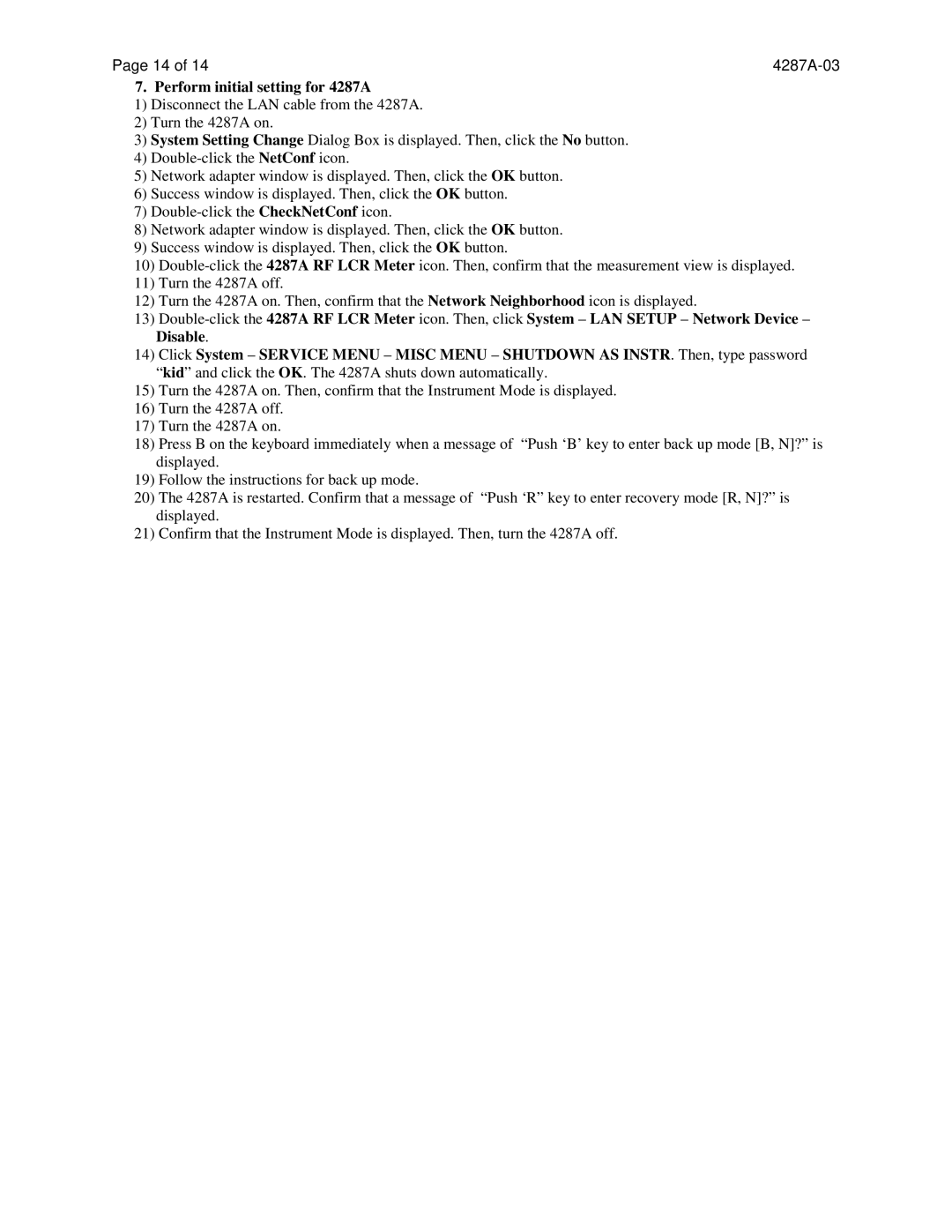4287A-03 specifications
The Agilent Technologies 4287A-03 is a state-of-the-art precision LCR meter, specifically designed to address the demands of both research and production environments. This versatile instrument is known for its exceptional accuracy and measurement speed, making it an essential tool for engineers and scientists involved in electrical characterization of materials and components.One of the main features of the Agilent 4287A-03 is its wide frequency range, which spans from 1 kHz to 10 MHz. This broad range allows users to conduct in-depth analyses of various components, including resistors, capacitors, inductors, and even complex devices such as semiconductor components. The ability to measure at different frequencies is particularly valuable for assessing the performance of materials under various operational conditions.
Another notable characteristic of the 4287A-03 is its high measurement accuracy. The instrument is equipped with advanced algorithms and calibration techniques that minimize errors, providing reliable and consistent results. This level of precision is crucial for applications that require strict adherence to specifications, such as high-frequency RF components and precision filters.
The 4287A-03 also boasts an impressive range of measurement capabilities, including series resistance, parallel resistance, dissipation factor, and quality factor. These features empower users to derive meaningful insights into the performance of electronic components and materials, aiding in the design and optimization of various applications.
In terms of user experience, the Agilent 4287A-03 is designed with an intuitive interface, making it easier for both novice and experienced users to navigate its features efficiently. The LCD screen provides clear readouts of measurements, while the instrument also supports external control through GPIB or USB interfaces. This flexibility allows users to integrate the LCR meter into automated test setups or data acquisition systems seamlessly.
Furthermore, the device comes with comprehensive data storage and recall capabilities, allowing users to save measurement results and settings for future reference. This feature is particularly useful for repetitive testing scenarios, enhancing productivity and ensuring consistency in data collection.
In conclusion, the Agilent Technologies 4287A-03 is a powerful and versatile LCR meter that combines an extensive frequency range, high accuracy, and a variety of measurement capabilities. Its user-friendly design and advanced technological features make it a valuable asset for professionals engaged in the fields of electronics research, development, and quality assurance. Whether characterizing passive components, testing new materials, or performing routine inspections, this instrument stands out as a premier choice in the industry.
